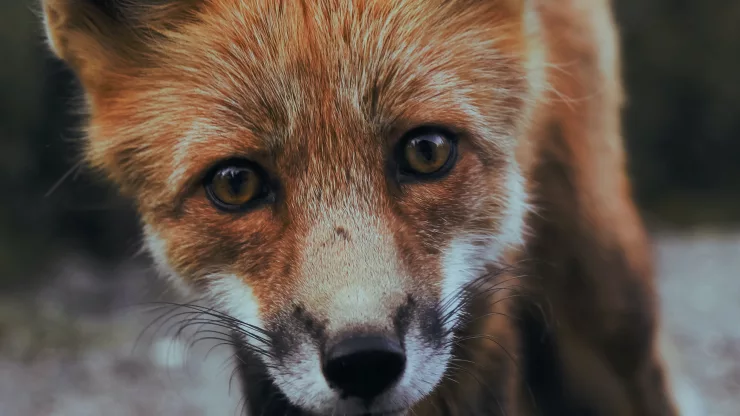Jump to Section
The Importance of Urban Wildlife Rehabilitation
Urban wildlife rehabilitation is the process of rescuing, rehabilitating, and releasing injured or orphaned wildlife back into their natural habitats.
This practice is important because it helps to restore balance to urban ecosystems, which are often disrupted by human activity.
By providing care to injured or orphaned animals, urban wildlife rehabilitation centers help to ensure that these creatures have a chance to survive and thrive in their natural environments.
While the primary goal of urban wildlife rehabilitation is to help animals, it also has important financial benefits.
In this article, we will explore the financial aspects of urban wildlife rehabilitation, including the earnings that can be generated from this practice.
By understanding the financial benefits of urban wildlife rehabilitation, we hope to inspire more people to get involved in this important work.
Financial Benefits of Urban Wildlife Rehabilitation
Urban wildlife rehabilitation centers are often funded by donations from individuals, organizations, and foundations.
These funds are used to cover the costs of caring for animals, including food, veterinary care, and housing.
In addition to donations, urban wildlife rehabilitation centers may also receive grants from government agencies or other organizations.
In addition to these sources of funding, urban wildlife rehabilitation centers may also generate revenue through the following means:
- Adoption fees: Some rehabilitation centers charge adoption fees for animals that are unable to be released back into the wild. These fees help to cover the cost of caring for the animal and may provide a source of income for the center.
- Educational programs: Many rehabilitation centers offer educational programs for schools, community groups, and other organizations. These programs may include guided tours of the facility, presentations on wildlife conservation, and hands-on activities for children. Fees charged for these programs can provide a source of income for the center.
- Merchandise sales: Some rehabilitation centers sell branded merchandise, such as t-shirts, hats, and stickers. These items can be sold in gift shops or online, providing a source of income for the center.
A Detailed Look at Earnings from Urban Wildlife Rehabilitation
The earnings generated by urban wildlife rehabilitation centers can vary widely depending on a number of factors, including the size of the center, the number of animals cared for, and the sources of funding.
However, some centers have reported significant earnings from their operations.
For example, the Wildlife Rehabilitation Center of Minnesota reported total revenue of $1.7 million in 2019.
This revenue was generated through a combination of donations, grants, and earned income from adoption fees, educational programs, and merchandise sales.
Another example is the Wildlife Center of Virginia, which reported total revenue of $2.4 million in 2019.
This revenue was generated primarily through donations and grants, but the center also earned income from adoption fees, educational programs, and merchandise sales.
Success Stories: How Urban Wildlife Rehabilitation Can Be Profitable
There are many success stories of urban wildlife rehabilitation centers that have been able to generate significant earnings while also providing important care to animals.
One such example is the Wildlife Rehabilitation Society of Edmonton, which reported earnings of $110,000 in 2019 through a combination of adoption fees, educational programs, and merchandise sales.
Another success story is the Wildlife Rehabilitation Center of Northern Utah, which reported earnings of $350,000 in 2019 through a combination of donations, grants, and earned income from adoption fees, educational programs, and merchandise sales.
These success stories demonstrate that urban wildlife rehabilitation can be both financially sustainable and socially impactful.
By generating income through a variety of sources, these centers are able to continue providing important care to animals while also contributing to their local communities.
FAQ
How can I get involved in urban wildlife rehabilitation?
There are many ways to get involved in urban wildlife rehabilitation, including volunteering at a local rehabilitation center, donating money or supplies to a center, or participating in educational programs.
Is it possible to make a living working in urban wildlife rehabilitation?
While it may be difficult to make a full-time living working in urban wildlife rehabilitation, there are many opportunities to earn income through this work, including through adoption fees, educational programs, and merchandise sales.
What skills are needed to work in urban wildlife rehabilitation?
Working in urban wildlife rehabilitation requires a range of skills, including knowledge of animal care and behavior, medical skills, and communication skills.
Many rehabilitation centers offer training programs for volunteers and staff.
I’m a nature enthusiast and creator of Metro Wilds and have spent years exploring the great outdoors.
With a passion for environmental conservation and sustainability, I have dedicated my career to writing about the beauty and wonders of nature, as well as the threats facing our planet.
Contact me at [email protected] for assistance.





